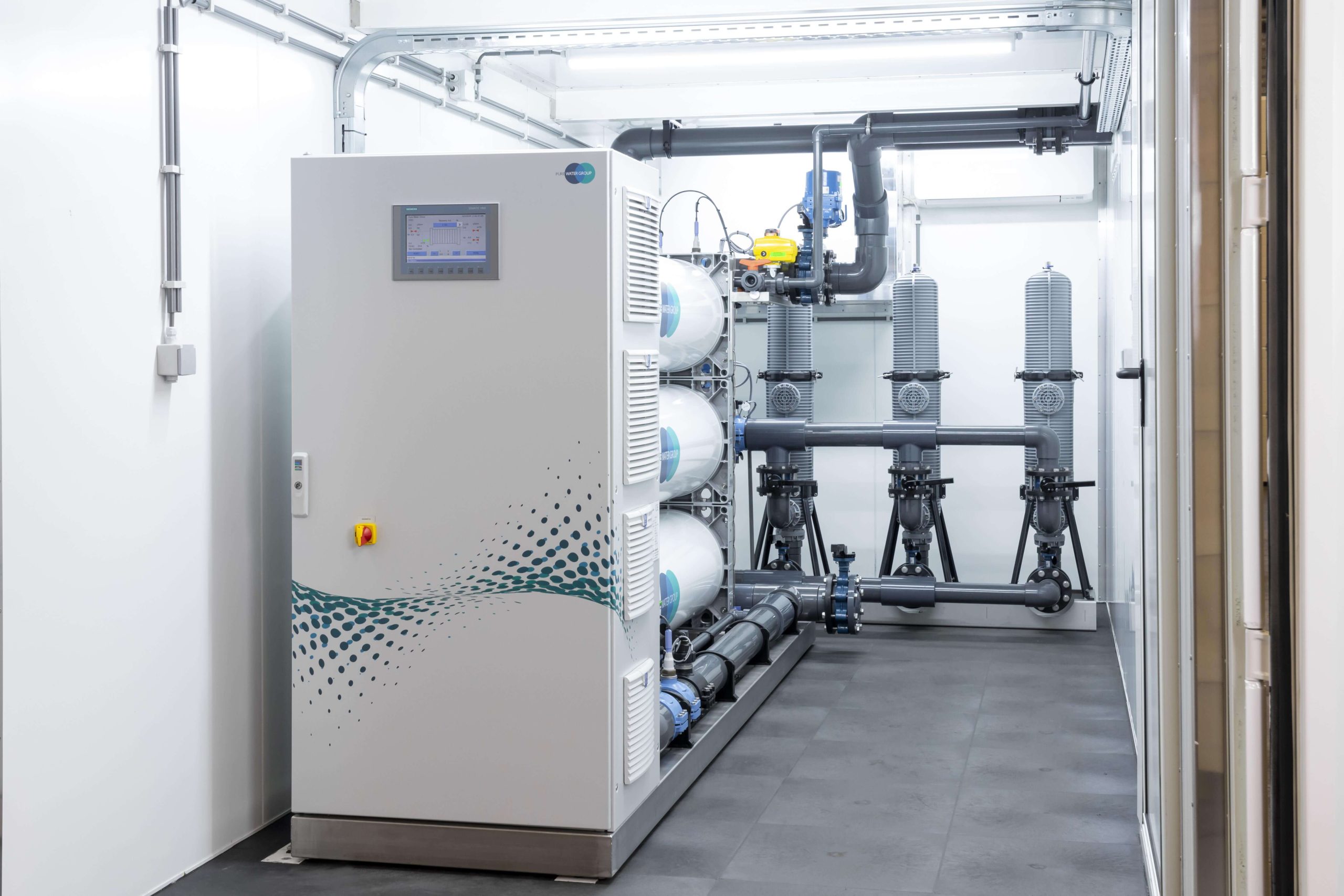


Electrodeionization, also referred to as Continuous Electrodeionization (CEDI) and Continuous Deionization (CDI), is a chemical-free technology that significantly reduces ions in water. CEDI uses cation and/or anion exchange resins that are continuously regenerated by an electrical current. EDI modules, also called “stacks,” consist of cell pairs with each pair containing an anode and cathode on separate sides. Each cell consists of a frame onto which are bonded a cation-permeable membrane on one side, and an anion-permeable membrane on the other.
The cation and anion exchange resins capture dissolved ions in the feed water at the top of the cell. Electric current applied across the module pulls those ions through the ion-selective membrane towards the electrodes. Cations are pulled through the cation-permeable
membrane towards the cathode, and anions through the anion-selective membrane towards the anode. These ions, however, are unable to travel all the way to their respective electrodes since they come to the adjacent ion-selective membrane which is of the opposite charge. This prevents further migrations of ions, which are then forced to concentrate in the space between the cells. This space is known as the “concentrate” channel, and the ions concentrated in this area are flushed out of the system to the drain.
The channel running through the resin bed in the center of the cell is known as the “dilute” channel. As water passes down this channel, it is progressively deionized. At the lower end of the dilute channel, where water is free of ions, splitting of H2O occurs in the electric field. This generates H+ and OH- which regenerate the ion exchange resins, effectively eliminating chemical regeneration
Continuous Electrodeionization is often used as a key part of a larger
ultrapure water
system. Ultrapure water systems typically utilize reverse osmosis in combination with
electrodeionization, which provides a completely chemical-free solution for water
treatment that is ideal for a number of applications including:
